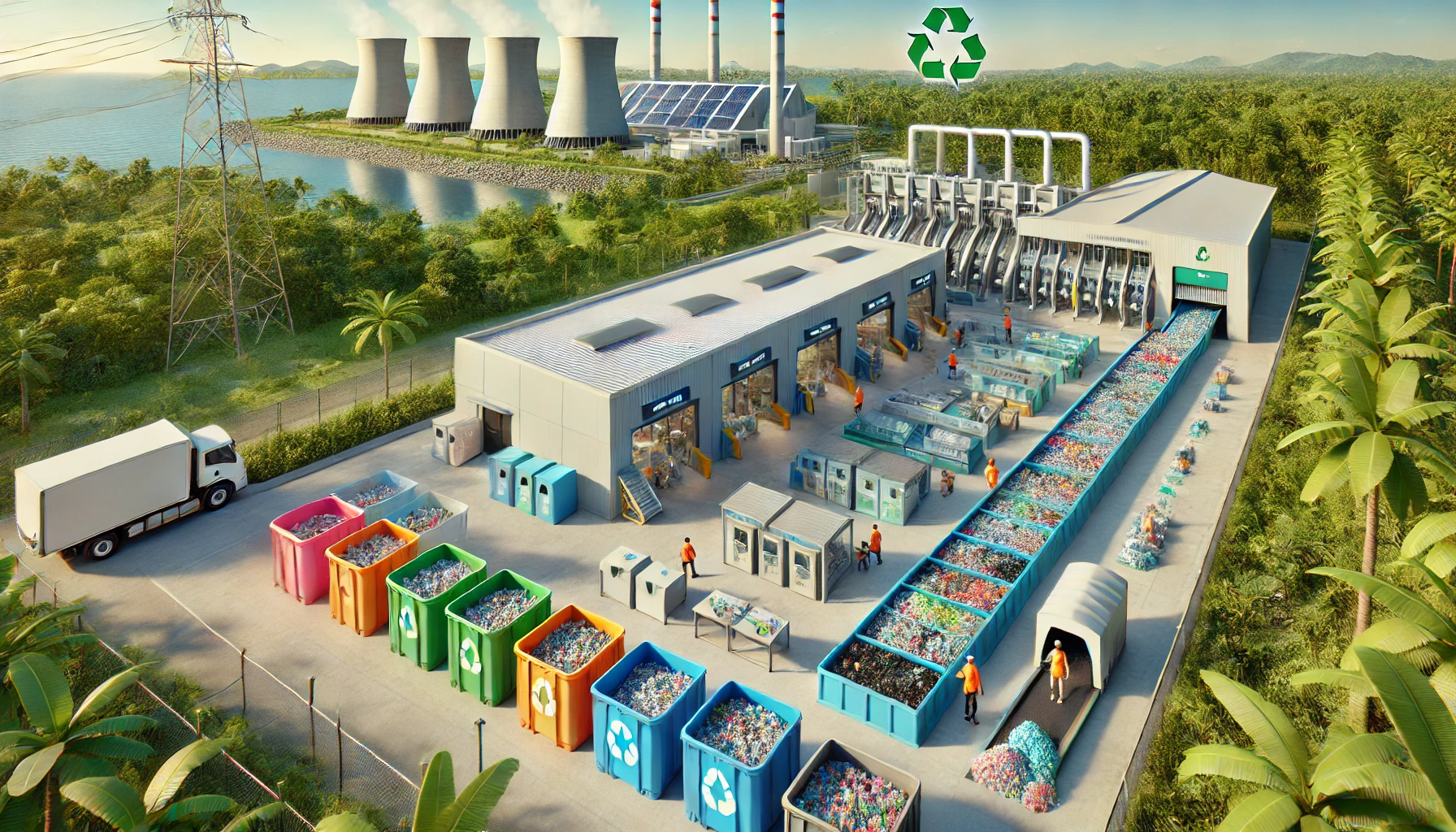Transforming Plastic Waste Management in Rayong: Boosting Recycling and Reducing Emissions
A study by researchers from Chulalongkorn University, the Tokyo Institute of Technology, and King Mongkut’s University explores strategies to improve plastic waste management in Rayong, Thailand by enhancing recycling and reducing GHG emissions. Maximizing source separation and recycling could significantly boost economic value and cut emissions, aligning with national sustainability goals.

Researchers from Chulalongkorn University in Bangkok, the Tokyo Institute of Technology, and King Mongkut’s University of Technology Thonburi have conducted an in-depth study on enhancing plastic waste (PW) management in Rayong, a coastal city in Thailand. The study aims to improve the current systems of plastic waste handling by exploring ways to reduce greenhouse gas (GHG) emissions while increasing economic value. The city, located on Thailand's eastern Gulf Coast, faces challenges in managing significant amounts of plastic waste, much of which is either incinerated for energy or ends up in landfills. By analyzing existing practices and proposing new strategies, the researchers present a roadmap to transition Rayong’s waste management system towards a more efficient and environmentally sustainable model, with a focus on the circular economy.
Current Waste Management Practices in Rayong
The current management practices in Rayong involve four main routes: source separation recycling, post-sorting recycling, energy recovery through incineration, and landfill disposal. Of the 5,445 tonnes of plastic waste generated annually, only 14.48% is recycled, while over half, 54.86%, is incinerated for energy recovery, and 30.66% is disposed of in landfills. This linear management system leads to significant economic loss and environmental degradation, particularly in terms of GHG emissions, which amount to approximately 7,028 tonnes of CO2 annually. The study points out that this method of waste management results in an underutilization of recyclable materials, especially high-value plastics like PET, HDPE, and LDPE, which could be processed for greater economic returns. Currently, recycling yields only 1.68 million USD annually, or around 310 USD per tonne of plastic waste, and the reliance on energy recovery through incineration is both economically and environmentally inefficient.
Exploring Scenarios for Improvement
To address these inefficiencies, the researchers propose five scenarios that could optimize plastic waste management in Rayong. The baseline scenario reflects the current situation, while the other four explore ways to enhance recycling and reduce dependence on incineration and landfills. These scenarios include maximizing recycling at the source, improving post-sorting facilities, promoting waste banks to encourage source separation, and increasing the capacity for waste-to-energy conversion. Each of these scenarios is designed to align with Thailand’s national goals of achieving a circular economy and zero waste to landfill by 2027.
Maximizing Recycling at the Source
One of the key findings of the study is that source separation for recycling presents the greatest potential for both reducing GHG emissions and increasing economic benefits. By improving the efficiency of recycling at the household level, Rayong could significantly reduce its reliance on landfills and incineration, which are currently the primary methods of disposal. If source separation were maximized, recycling rates could rise to 90.7%, and the city could generate as much as 6.48 million USD annually, more than three times the current revenue. Additionally, this would lead to a reduction of nearly 15,000 tonnes of CO2 emissions per year, bringing the environmental impact in line with Thailand’s sustainability objectives.
The Role of Waste Banks in Rayong’s Future
The study also explores the role of waste banks, community programs that encourage residents to separate their waste at the source in exchange for rewards or monetary incentives. These programs have proven effective in increasing recycling rates and improving the quality of recyclable materials, which in turn boosts their market value. Waste banks help ensure that materials like PET and HDPE are separated at the source, keeping them clean and uncontaminated, which makes them more valuable to recycling plants. By promoting such initiatives, the city could improve the economic returns of its waste management system while simultaneously reducing the environmental harm caused by improper disposal methods.
Balancing Waste-to-Energy with Recycling
In contrast, the waste-to-energy approach, which involves burning plastic waste to generate electricity, is found to be less effective in terms of both economic return and environmental protection. Although it reduces the volume of waste sent to landfills, this method generates significant GHG emissions of around 2.19 tonnes of CO2 per tonne of plastic waste. This is in stark contrast to the emissions reductions achieved through recycling, which, when optimized, could result in negative emissions meaning that recycling would save more emissions than it generates. The study underscores that while waste-to-energy methods have their place, particularly for non-recyclable materials, they should not be the primary strategy for managing plastic waste in Rayong.
The researchers argue that the most effective way forward for the city is to focus on improving recycling processes, particularly by enhancing source separation and expanding the capacity of recycling facilities. This strategy would not only reduce the city’s carbon footprint but also unlock the economic potential of its waste management system, turning a costly and environmentally damaging process into a more sustainable and profitable one. By adopting a circular economy approach, Rayong can significantly reduce its plastic waste emissions and economic losses while serving as a model for other regions facing similar challenges. The findings of this study offer valuable insights for local policymakers, who are encouraged to develop targeted strategies and interventions that prioritize recycling over incineration and landfill use. With the right policies in place, Rayong can achieve a more sustainable plastic waste management system that aligns with Thailand’s national goals and sets a precedent for other regions seeking to improve their environmental and economic outcomes.
- READ MORE ON:
- greenhouse gas
- plastic waste
- Rayong
- GHG emissions
- CO2 emissions
- FIRST PUBLISHED IN:
- Devdiscourse










